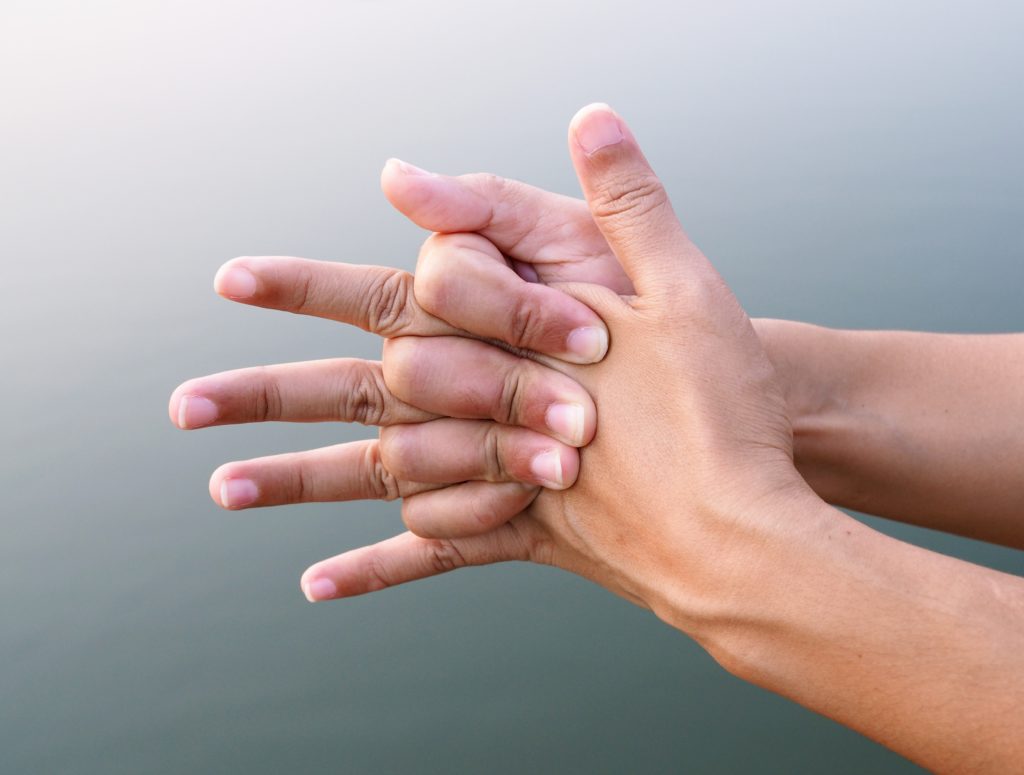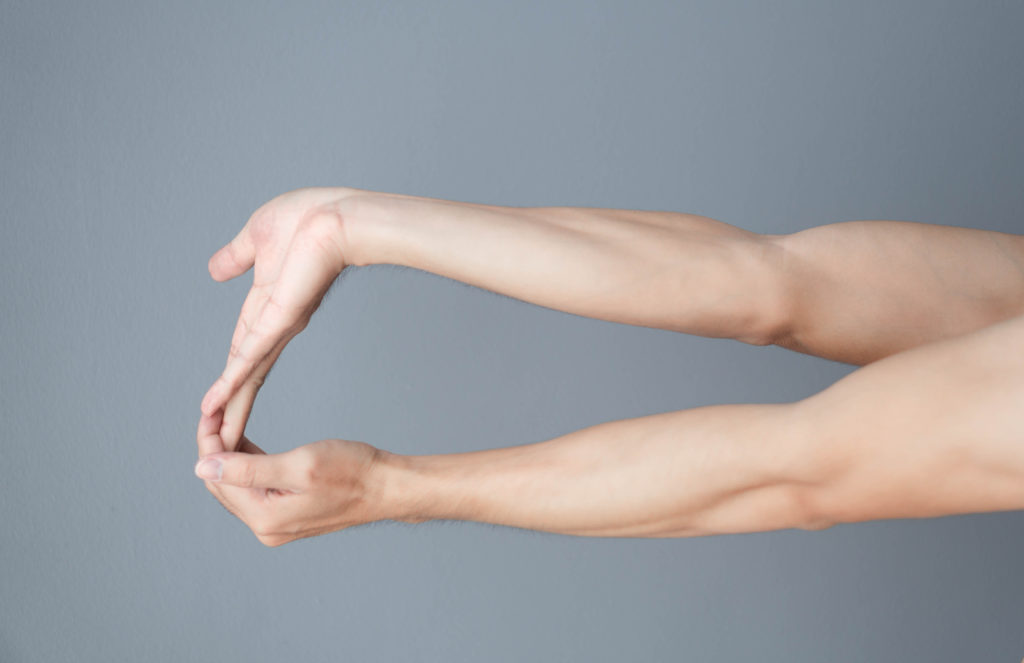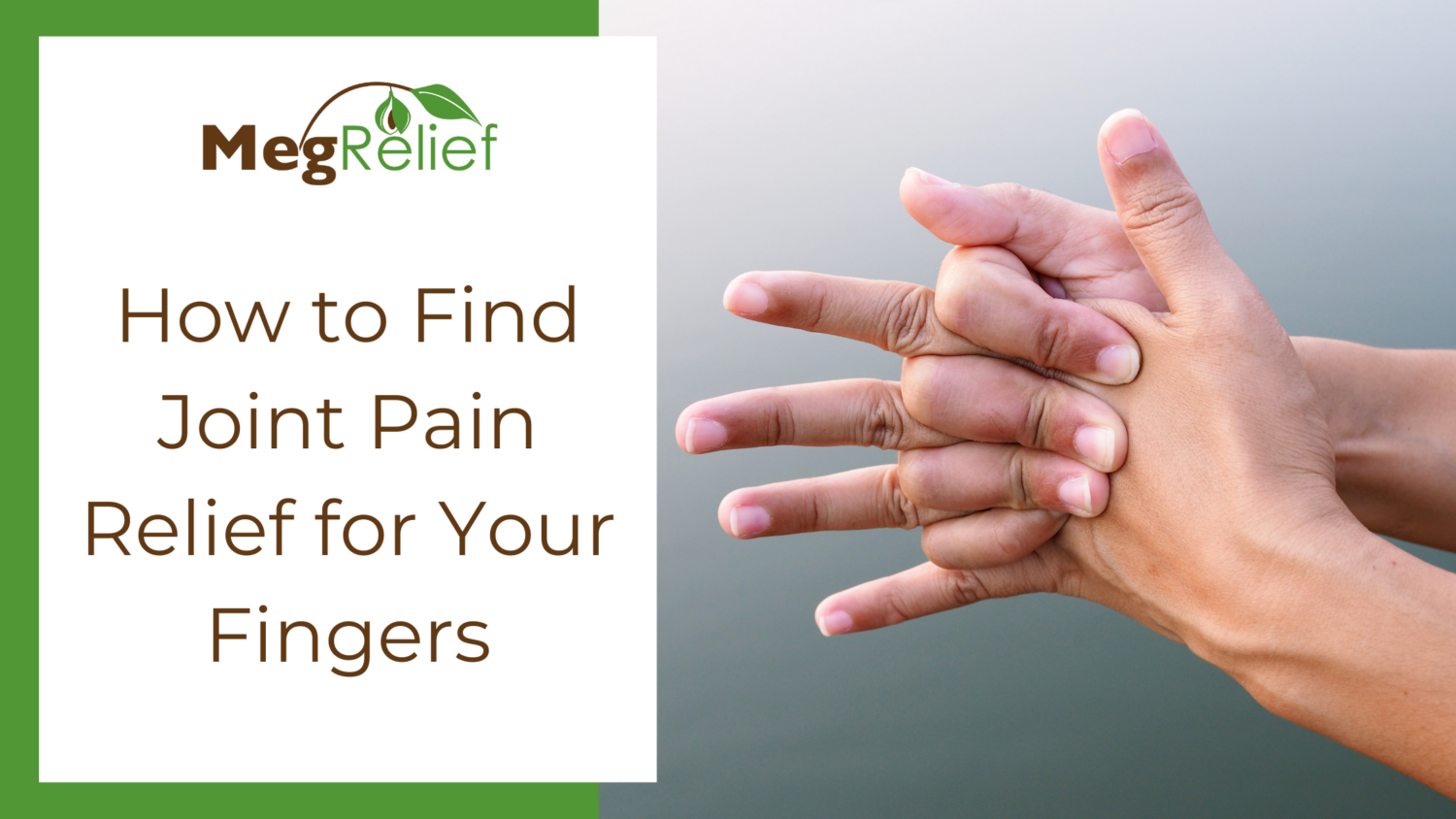Finding joint pain relief for your fingers may not be as tough as you think.
Finger pain can range from mild to severe and from short-term to chronic; one thing is certain- finger pain can make it difficult to do daily activities like gripping a cup or tying your shoes.

Finger pain can be in one finger or several fingers, in one hand or in both. The first step is to find out what is causing the pain.
Causes of joint pain in the finger(s)
There are many causes of joint pain in the finger(s)
- Contact sports
- Recreational activities such as skiing or tennis
- Repetitive motions from using machinery or electronics
- Fighting or punching
- Injuries
Injuries include
- Smashed fingers
- Compartment syndrome – severe swelling and pressure in an area of muscles, nerves, and blood vessels
- Mallet finger
- Strains, sprains, bruises
- Breaks or fractures
- Dislocation
- Cuts or puncture wounds
- Trigger finger (stenosing tenosynovitis)
- Carpal tunnel
- De Quervain’s tenosynovitis
- Tumor
- Dupuytren’s contracture
- Raynaud phenomenon
- Arthritis
- Cysts
Symptoms
If you have finger pain, you may be experiencing one or more of the following symptoms:
- Tenderness
- Burning
- Inflexibility
- Lack of feeling
- Prickling
- Coldness
- Puffiness
- Skin color changes
- Redness
- Loss of motion
- Deformity
- Joint motion that is accompanied by grinding, clicking or cracking
- Weakness
- Bruising
- Fingers that are bent in toward the palm
Some of these conditions are indicative of arthritis, some may indicate blood flow or nerve issues, and others may be signs of infection.
If you experiencing one or more of these symptoms, you should see your physician to get an accurate diagnosis for your finger joint pain and to obtain treatment.
Treatment of joint pain in the finger(s)
Treatment of pain in fingers will differ depending on the diagnosis; this is why it is important to see your physician for a proper diagnosis.
Treatment of trigger finger usually consists of steroid shots, a splint to keep the finger extended, and if the problem is severe enough, surgery.
Treatment for Dupuytren’s contracture usually consists of Xiaflex injections or surgery.
Other treatments for various finger pain problems are as follows:
- Medications such as Ibuprofen and Acetaminophen
- Anti-inflammatories such as Celebrex
- Splints
- Heat and cold
- Cortisone injections
- Reduction of repetitive activities
- Exercise
- Surgery
The treatments above may be able to be combined with homeopathic remedies, but speak with your doctor before incorporating them to be sure that there will be no interactions with prescription medications. Also, eat a balanced diet that emphasizes the intake of vitamins, minerals, and nutrients.
Homeopathic remedies for finger pain
There are several homeopathic remedies that can relieve or greatly reduce finger joint pain.
Essential oils for trigger finger can be used to reduce pain. Use the following essential oils: frankincense, lavender, peppermint, lemongrass, and/or nutmeg.
Make your own capsaicin treatment by adding a couple of dashes of capsaicin to a couple of teaspoons of olive oil. Apply with a cotton ball or gauze to unbroken skin. Remember not to rub your eyes with this cream on your skin.
Drink ginger tea as it has anti-inflammatory properties.
Make your own poultices. A chamomile tea poultice can be made by brewing 4 chamomile tea bags in one covered cup of hot water for 20 minutes then removing the tea bags and squeezing them out. After that, soak a clean cloth in the brew and apply to your joints. To make a ginger poultice, peel and finely crush a 3-inch piece of fresh ginger and then mix it with just enough olive oil to form a paste and then apply it to the painful joints. Depending on where the pain is, you may need to wrap it with gauze or an ace bandage to keep the paste in place and leave it on for 10-15 minutes.
If the inflammation is flared up, add some turmeric, cayenne pepper, or ginger to your food as they decrease swelling and inhibit a brain chemical that sends pain signals.
Make your own hot or cold packs. Make a cold pack by using a ziplock bag and adding 2 cups of water and 1 cup of rubbing alcohol; seal the bag then place it upside down in another bag. Seal the second bag and put them in the freezer.
Hot packs can be made by placing rice, flaxseed, buckwheat or oatmeal in a sock. You can then place the sock in the microwave for 30 seconds at a time until it is at the temperature you want then place it on the joints with a barrier between your skin and the sock to prevent burns.
Avoid foods that trigger inflammation and replace them with foods that offer anti-inflammatory properties like fish and other foods that are high in omega-3 fatty acids.
Exercises for the hands and fingers
These are simple exercises for the hand and fingers that can be done anytime, anywhere.
- Make a fist-Start with your fingers straight and make a fist and then open your fingers again.
- Finger bends-Hold your hand out with your fingers straight, bend your thumb toward your palm and then move it back to the original position. Do the same with your index finger and repeat for each finger on your hand.
- Make an O-Hold your hand out with your fingers straight then bend your fingers to form an O. Return your fingers to their original positions.
- Finger lift-Place your hand palm down on the table and lift each finger one at a time off the table starting with the thumb.
- Wrist stretch, hold your arm out with your palm down. With the opposite hand, gently press down on that hand until you feel a stretch in the wrist and arm.
Repeat these exercises anytime you feel your fingers stiffening up.

If you are experiencing joint pain in your fingers, see your physician for a diagnosis and discuss treatments. Your physician will examine your finger and then may order lab work and imaging to determine the cause.
Depending on the problem, you may be able to use homeopathic remedies for things like strains, sprains, bruises and mild inflammation; for issues like inflammation and stiffness, you may need to combine traditional and homeopathic remedies. Your doctor will help you decide.
Remember, a good diet can also go a long way when it comes to reducing inflammation and preventing injury and disease.






